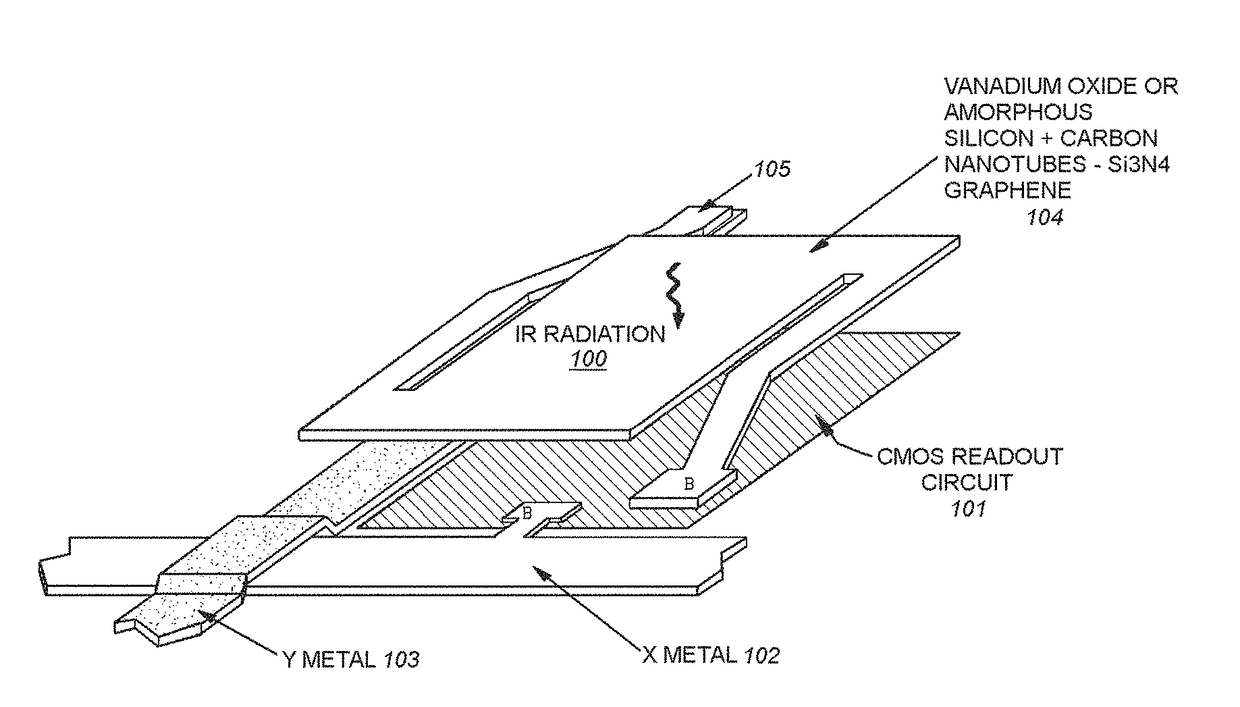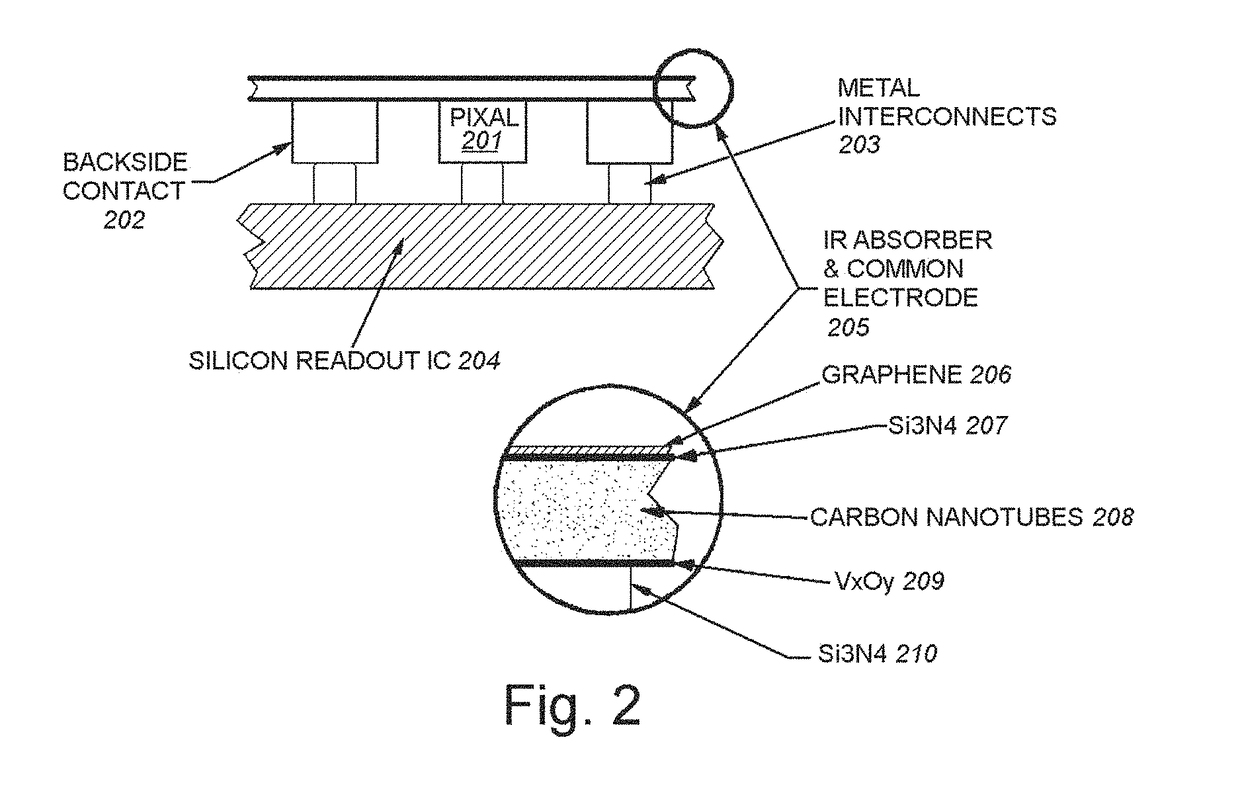Silicon nitride-carbon nanotube-graphene nanocomposite microbolometer IR detector
a technology of carbon nanotubes and graphene, which is applied in the field of thermal ir detectors, can solve the problems of limited application to ir systems, and achieve the effect of widening the range of sensitivity and increasing sensitivity
- Summary
- Abstract
- Description
- Claims
- Application Information
AI Technical Summary
Benefits of technology
Problems solved by technology
Method used
Image
Examples
Embodiment Construction
[0025]The present application includes a carbon nanotube (CNT)-Si3N4-graphene nanocomposite that can be disposed atop a vanadium oxide or amorphous silicon-based IR detector of a microbolometer, thereby providing enhanced IR detection of the microbolometer. Herein, it is to be noted that the thermal IR detector may be referred to as a nanocomposite microbolometer.
[0026]FIG. 1 depicts an overall structure of detector of a microbolometer. The structure depicted in FIG. 1 can represent a single detector (e.g., pixel) of an overall microbolometer structure, which can comprise an N×M array of thermally isolated detectors. As shown, electromagnetic (e.g., infrared) radiation 100 is at least partially or completely absorbed by the detector 104. In one example, the detector 104 is a Si3N4-CNT-graphene nanocomposite disposed on a vanadium oxide or amorphous silicon IR detector, which will be described in greater detail below. Detector 104 is shown as being cantilevered by a pair of support l...
PUM
 Login to View More
Login to View More Abstract
Description
Claims
Application Information
 Login to View More
Login to View More - R&D
- Intellectual Property
- Life Sciences
- Materials
- Tech Scout
- Unparalleled Data Quality
- Higher Quality Content
- 60% Fewer Hallucinations
Browse by: Latest US Patents, China's latest patents, Technical Efficacy Thesaurus, Application Domain, Technology Topic, Popular Technical Reports.
© 2025 PatSnap. All rights reserved.Legal|Privacy policy|Modern Slavery Act Transparency Statement|Sitemap|About US| Contact US: help@patsnap.com



